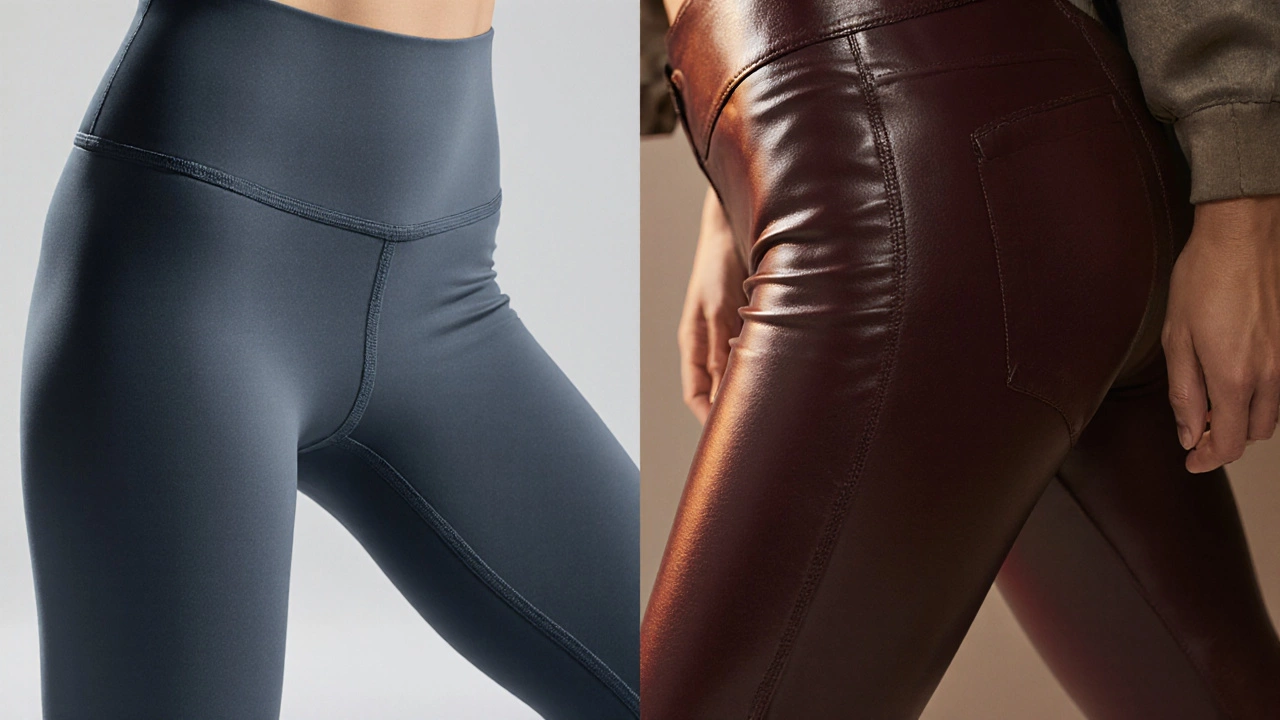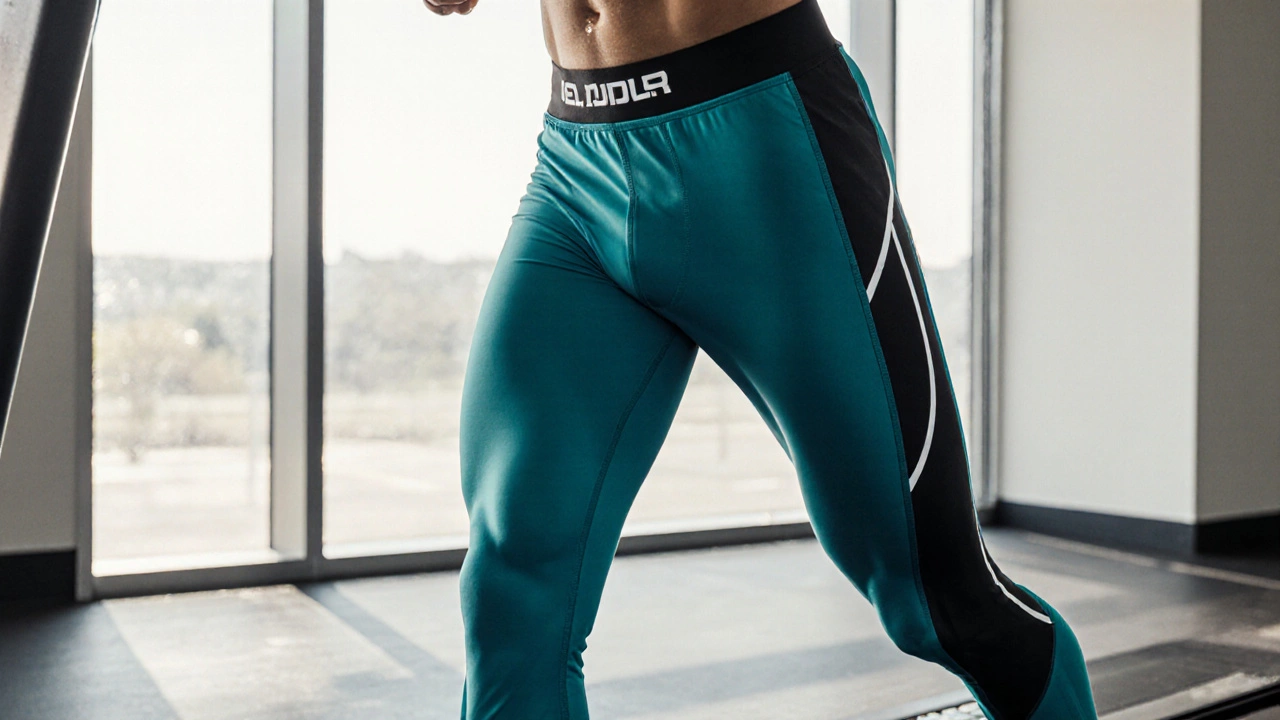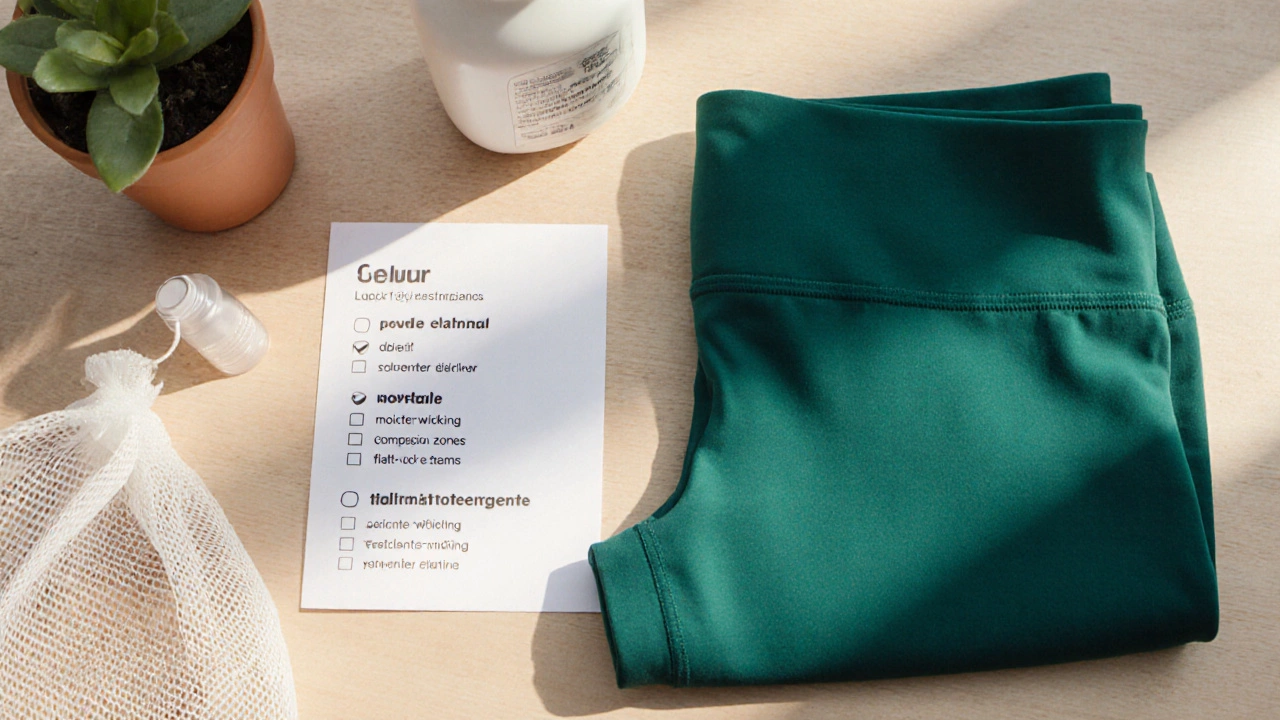Leggings vs Activewear: Are Leggings Considered Activewear?

- Cleo Fairchild
- 22 October 2025
- 0 Comments
Activewear Leggings Qualifier
Leggings Evaluation Tool
Check the features that match your leggings to determine if they qualify as genuine activewear. Only leggings with 3+ technical features are considered true activewear.
When shoppers talk about Leggings are tight‑fitting, stretchy trousers usually made from knit fabrics like elastane or polyester blends, the first question is whether they count as activewear. The answer isn’t a simple yes or no - it depends on fabric, design, and intended use. Below you’ll find everything you need to decide if your favorite pair belongs in the gym bag or the weekend wardrobe.
Key Takeaways
- Leggings can be activewear when they use performance fabrics (e.g., compression, moisture‑wicking) and are designed for movement.
- Fashion‑first leggings lack technical features and are better suited for casual wear.
- Brands often label the same product differently for marketing; check fabric specs and fit.
- Mixing leggings with other true active pieces (sports bras, jackets) creates a functional workout outfit.
- Understanding the difference helps you buy smarter, avoid sweat‑stains on your office attire, and stay comfortable during exercise.
What Exactly Is "Activewear"?
Activewear is clothing engineered for physical activity, featuring attributes like stretch, breathability, moisture‑wicking, and durability. The category covers everything from running shorts to compression tops. Its core purpose is to enhance athletic performance while keeping the wearer comfortable.
How Leggings Fit Into the Activewear Landscape
Leggings fell into the fitness world in the early 2000s, mostly as yoga pants. Over time, they evolved into two distinct camps:
- Performance Leggings: Made from compression fabric, they often incorporate moisture‑wicking technology, flat seams, and a gusseted crotch for unrestricted motion. These are purpose‑built for running, HIIT, cycling, and other high‑intensity workouts.
- Fashion Leggings: Crafted from denim‑look, faux‑leather, or soft jersey, they prioritize style over function. They may look great at brunch but can trap sweat and restrict movement during a spin class.
Only the first group truly qualifies as activewear.
Material Matters: The Technical Specs That Turn Leggings Into Activewear
Here’s a quick cheat‑sheet of the fabric features you should hunt for:
- Elastane (Spandex/Lycra) Content - 10%-30% gives the stretch needed for deep lunges and squats.
- Polyester or Nylon Base - pulls moisture away from skin and dries quickly.
- Compression Zones - targeted pressure that supports muscle groups and may reduce fatigue.
- Flatlock Seams - minimize chafing during repetitive motion.
- Four‑Way Stretch - allows movement in all directions, crucial for yoga and pilates.
If a pair of leggings lists three or more of these, you can safely file them under activewear.

Performance vs. Style: When to Choose Leggings for Your Workout
Consider the activity:
| Feature | Performance Leggings | Typical Yoga Pants | Standard Gym Shorts |
|---|---|---|---|
| Fabric | Polyester/Elastane blend with moisture‑wicking | Soft jersey with light stretch | Polyester mesh |
| Compression | Yes (mid‑thigh to calf) | Minimal | None |
| Support for high‑impact | High | Medium | Low |
| Style versatility | High (athleisure) | High (studio to street) | Low |
For a sweaty HIIT session, performance leggings win hands down. For a gentle yoga flow, even fashion‑oriented yoga pants work fine because the movement intensity is lower.
Why the Terminology Overlaps: "Leggings," "Yoga Pants," and "Athleisure"
Marketing teams love fuzzy labels. Yoga pants originally meant a loose‑fit, high‑waist legging designed for the studio. Today, many brands sell the same cut under the umbrella term athleisure, which blurs the line between workout gear and streetwear.
The practical tip? Look beyond the name. Check the product description for terms like "engineered for performance," "dry‑fit," or "compression." Those clues tell you if the piece belongs in your gym bag.
Real‑World Scenarios: Putting Leggings to the Test
Scenario 1 - Sprint Interval Training
John runs 30‑second sprints on a treadmill. He needs leggings that stay in place, manage sweat, and support his quadriceps. A pair of compression leggings with flatlock seams and a wide waistband fits the bill. Regular fashion leggings would bunch up and keep him uncomfortable.
Scenario 2 - Coffee‑Shop Brunch After Yoga
Sophie finishes a gentle Vinyasa class and walks to a café. She wants a sleek look, but she also expects a few drops of sweat. She chooses a pair of soft‑jersey leggings labeled "yoga pants" with a relaxed fit. The fabric isn’t high‑tech, but the low‑impact activity means she stays comfortable and stylish.
How to Spot Genuine Activewear Leggings While Shopping Online
- Read the fabric composition; look for polyester, nylon, and at least 10% elastane.
- Check for keywords: "moisture‑wicking," "quick‑dry," "compression," "flatlock seams," "four‑way stretch."
- Consult size guides - performance leggings often have a tighter fit than fashion versions.
- Look for reviews that mention "no chafing" or "stays in place during a run."
- If still unsure, contact the brand’s customer service and ask about the intended use.
Following these steps prevents you from buying a stylish pair that leaves you dripping in the gym.

Maintenance Tips for Activewear Leggings
Performance fabrics need special care to retain their engineered properties:
- Machine‑wash on a cold, gentle cycle.
- Avoid fabric softeners - they can block moisture‑wicking channels.
- Air‑dry or tumble dry low; high heat weakens elastane.
- Store folded, not hung, to prevent stretching at the waist.
Proper care extends the life of your leggings, keeping them functional for months rather than weeks.
Bottom Line: Are Leggings Activewear?
The answer to the headline question is yes, but only when they meet performance criteria. If the leggings are built with compression, moisture‑wicking, and stretch‑focused fabrics, they are genuine activewear suitable for high‑intensity workouts. If they prioritize denim looks or plush textures without technical features, they belong to the casual fashion category.
Frequently Asked Questions
Can I wear fashion leggings to a low‑impact class like yoga?
Yes. Yoga usually involves gentle movements, so a soft‑jersey pair will feel fine. Just make sure they’re not so tight they restrict breathing.
What’s the difference between leggings and yoga pants?
Historically, yoga pants were looser and designed for studio work, while leggings were tighter and used for fashion or sports. Today the terms overlap; focus on the fabric specs to know their true purpose.
Do compression leggings improve performance?
Many athletes report reduced muscle vibration and quicker recovery when using well‑designed compression leggings, especially during high‑impact activities like running or CrossFit.
How can I tell if my leggings are moisture‑wicking?
Check the label for terms like "dry‑fit," "quick‑dry," or "Dri‑Fit®". You can also do a simple test: splash a little water on the fabric; if it beads up and dries within minutes, it’s likely moisture‑wicking.
Should I buy separate leggings for the gym and for casual wear?
If you train heavily, investing in dedicated performance leggings helps keep them in good shape longer. For casual days, a fashion‑forward pair can work without risking wear on your gym gear.
Next Steps
Now that you know what makes leggings qualify as activewear, head to your favourite sportswear store (online or offline) and scan the product specs. Pick a pair that ticks at least three of the performance boxes, and you’ll have a reliable companion for everything from sprint intervals to brunch‑after‑yoga.


